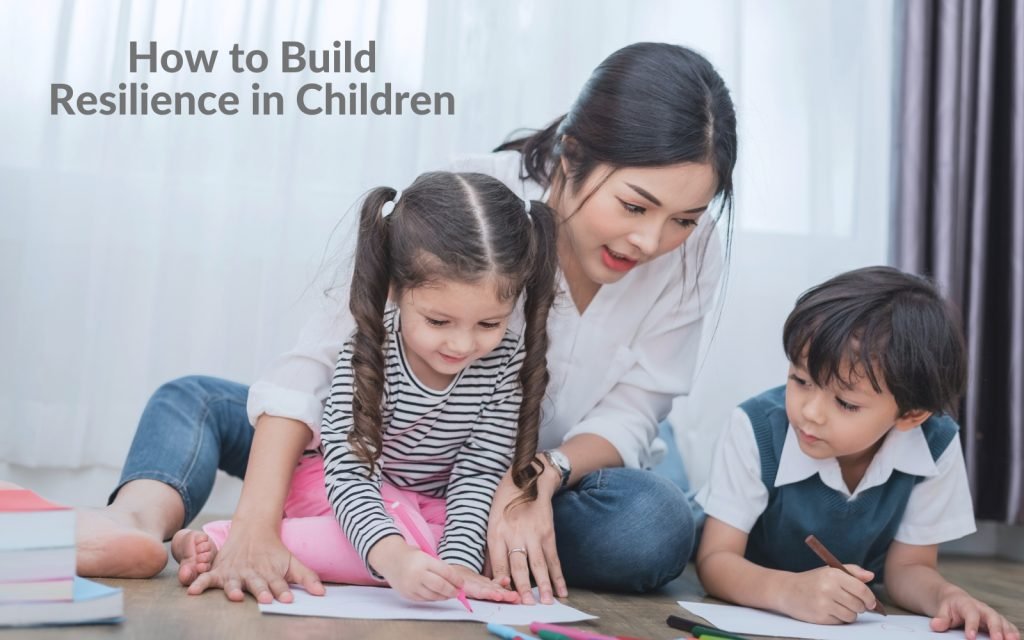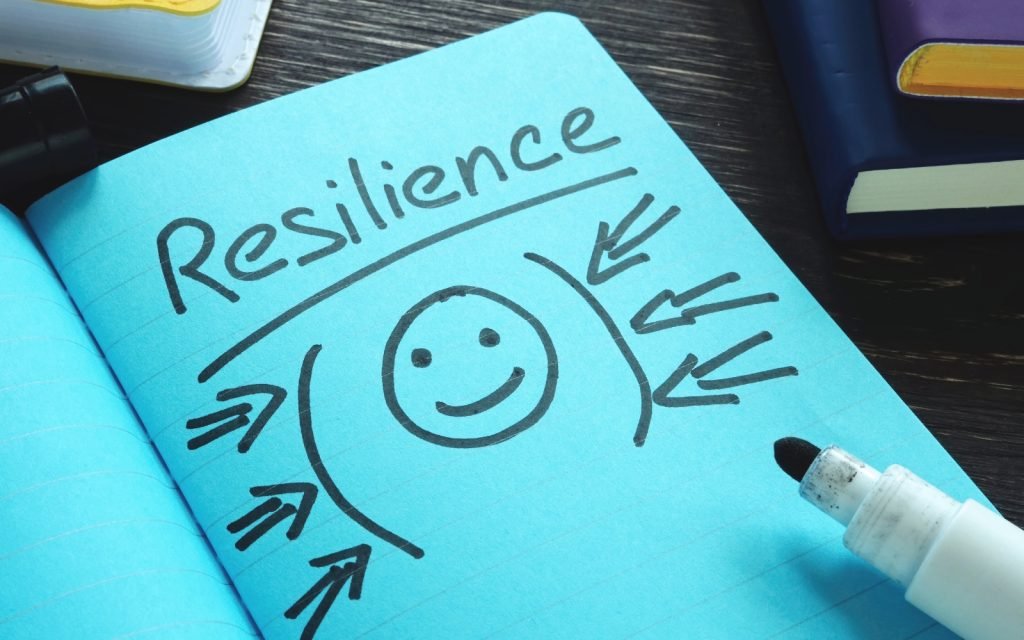Building Resilience in Young Children 2025: An Essential Guide to Helping Kids Thrive

Resilience is the ability to adapt, overcome, and thrive in the face of challenges. For children, building resilience is a key skill that enables them to cope with emotions, handle adversity, and grow into confident individuals. With the right support and activities, kids can learn to navigate tough times effectively and develop lifelong habits that foster mental health and well-being.
This guide explores strategies, activities, and tips to help children develop resilience, whether in the classroom, at home, or in everyday life.
Key Takeaways – Building Resilience in Young Children
- Resilience is a skill children can develop through practice and support.
- Positive relationships, routines, and self-care are vital for resilience.
- Encouraging emotional awareness and problem-solving builds confidence.
- Age-appropriate activities provide opportunities for children to learn and thrive.
Why Is Resilience Important?

Resilience helps children cope with stress, manage emotions, and see beyond temporary setbacks. Instead of feeling overwhelmed, resilient children are better equipped to face life’s ups and downs, whether dealing with school challenges, friendships, or big changes.
Benefits of Building Resilience:
- Emotional Strength: Teaches kids to express and regulate emotions like anxiety or sadness.
- Confidence: Helps children feel capable of handling obstacles independently.
- Social Skills: Encourages empathy, communication, and strong relationships.
- Mental Health: Supports long-term well-being and reduces stress.
How to Build Resilience in Children

1. Create a Safe, Supportive Environment
Children need to feel secure before they can face challenges with confidence.
- Establish Stability: Develop a predictable routine to make them feel safe.
- Encourage Open Communication: Allow children to express their feelings without fear of judgment.
- Be Present: Spend quality time listening and supporting their emotional needs.
Why It Matters: A strong foundation of support helps children approach challenges with less fear and more confidence.
2. Teach Emotional Awareness and Regulation
Helping children understand their feelings is a crucial step in resilience.
- Name the Emotion: Use phrases like, “It seems like you’re feeling frustrated about this.”
- Practice Self-Care: Teach kids calming techniques like deep breathing or drawing.
- Normalize Emotions: Let them know it’s okay to feel sad, scared, or angry sometimes.
Why It’s Effective: Emotional awareness allows children to respond effectively to distress and build mental flexibility.
To further aid emotional growth in young ones, consider exploring Early Language Development Tips as language plays a crucial role in expressing emotions.
3. Encourage Problem-Solving Skills
Give children opportunities to solve challenges in a safe and supportive way.
- Start with Simple Problems: Activities like completing puzzles or building a block tower help develop perseverance.
- Guide, Don’t Fix: Instead of solving their problems, ask guiding questions like, “What do you think we could try next?”
- Celebrate Effort: Praise them for trying, even if the result isn’t perfect.
Pro Tip: Problem-solving skills teach children that obstacles are opportunities to learn and grow.
4. Build Positive Routines and Habits
A consistent schedule provides stability and comfort, especially during uncertain times.
- Develop a Morning Routine: Include time for breakfast, getting dressed, and a positive start to the day.
- Create a Relaxing Bedtime Routine: Activities like reading or reflecting on the day encourage a sense of closure.
- Introduce Self-Care Habits: Teach children to prioritize their well-being with healthy eating, rest, and play.
For nighttime struggles, Sleep Training Techniques for Babies can help establish healthy sleep patterns from an early age.
Why It Helps: Routines give children a sense of control over their environment, reducing anxiety.
5. Encourage Age-Appropriate Responsibilities
Giving children tasks they can handle boosts their confidence and resilience.
- Chores at Home: Simple tasks like setting the table or tidying toys provide a sense of accomplishment.
- Classroom Activities: Encourage participation in group projects or helping classmates.
- Problem-Solving in Play: Role-play scenarios to teach social skills and decision-making.
Why It Works: Responsibility helps kids see themselves as capable and valuable contributors.
To inspire creativity and initiative, read about Encouraging Independent Play for ideas on fostering self-reliance in kids.
6. Foster Empathy and Social Skills
Strong relationships are a critical part of resilience.
- Teach Active Listening: Encourage children to listen carefully to others’ feelings and experiences.
- Model Kindness: Show empathy in your interactions and highlight its importance.
- Encourage Friendships: Help kids build strong connections with peers.
Why It Matters: Social support helps children face tough times with a sense of belonging and care.
7. Promote a Growth Mindset
Help children view challenges as opportunities for growth.
- Reframe Failures: Teach kids that mistakes are a normal part of learning.
- Celebrate Progress: Focus on effort and improvement, not just outcomes.
- Use Positive Language: Replace “I can’t do this” with “I’ll keep trying.”
Pro Tip: A growth mindset fosters resilience by showing children that hard work leads to improvement.
8. Model Resilient Behaviors
Children learn by watching adults handle stress and challenges.
- Stay Calm During Tough Times: Demonstrate how to approach problems with patience and optimism.
- Share Personal Examples: Talk about a time you overcame a challenge and what you learned.
- Use Positive Self-Talk: Let children see you approach setbacks with a solution-focused attitude.
Why It Helps: Modeling resilience shows kids how to handle adversity with confidence.
9. Help Children See the Bigger Picture
Resilience isn’t just about bouncing back; it’s about moving forward with a positive outlook.
- Encourage Gratitude: Reflect on things they’re thankful for each day.
- Discuss Temporary Challenges: Remind them that tough times are part of life but don’t last forever.
- Focus on Contributions: Teach children how helping others can create a sense of purpose.
Why It Works: Seeing beyond their immediate feelings helps children find meaning in challenges.
Resilience in Action

Building resilience in children doesn’t require grand gestures. It’s the small, everyday moments—like comforting them after a fall or encouraging them to try again when they’re frustrated—that make the biggest impact. By practicing these skills consistently, children develop the confidence and adaptability to face life’s challenges.
Summary
Building resilience in children is about equipping them with the skills, habits, and emotional awareness needed to thrive in a complex world. From creating a stable routine to teaching problem-solving and fostering empathy, parents and caregivers play a crucial role in shaping a resilient next generation. Remember, resilience is built through practice, patience, and support, helping children face challenges with strength and optimism.
Frequently Asked Questions
1. What Is Resilience in Children?
Resilience is the ability to cope with challenges, adapt to change, and recover from setbacks. It helps children build confidence and handle adversity effectively.
2. How Can Routines Help Build Resilience?
Routines provide stability and predictability, making children feel safe and enabling them to focus on learning and growth, even during stressful times.
3. Can Resilience Be Taught at Any Age?
Yes, resilience-building can begin in early childhood and continues throughout life. Even young children benefit from learning age-appropriate skills and habits.
4. What Activities Can Help Build Resilience?
Problem-solving games, role-play, group activities, and age-appropriate responsibilities all provide opportunities for children to learn resilience.
5. Why Is Emotional Awareness Important for Resilience?
Understanding and managing emotions allows children to respond effectively to challenges, reducing anxiety and building mental strength.
5. Can Resilience Be Taught After Trauma?
Yes, resilience can be nurtured even after painful events. Supportive relationships, empathy, and coping skills are key to helping children recover and move forward.





